Submitted by WA Contents
OMA designs a Food Port in West Louisville
United Kingdom Architecture News - Feb 25, 2015 - 09:10 8927 views
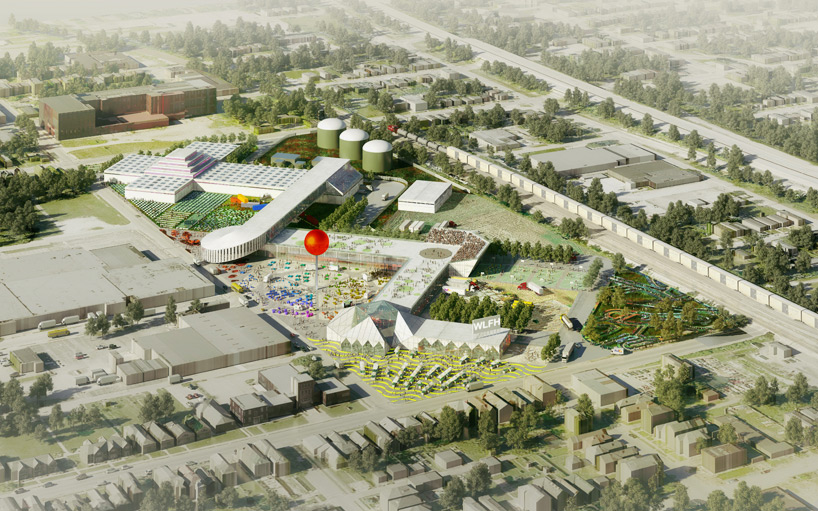
image © OMA
OMA has designed a masterplan for a mixed-use project that will provide a new centralized facility for the growing, selling and distribution of food for local farmers and the community. Working in collaboration with the non-profit Seed Capital Kentucky for the City of Louisville, the Food Port will take significant steps towards rejuvenating a 24-acre vacant site into an active economic and community hub.
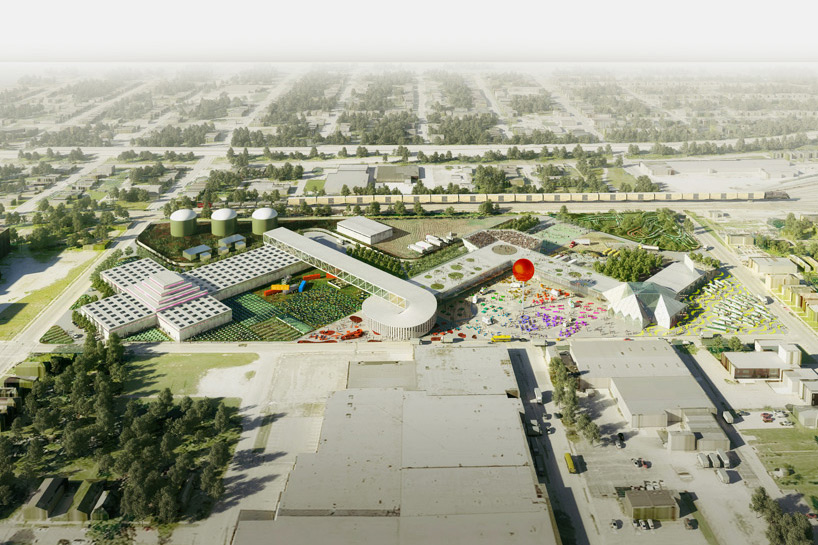
image © OMA
"The diversity of program reflects the full food chain, as well as a new foodscape of public spaces and plazas where producers and consumers meet," said OMA's partner-in-charge Shohei Shigematsu, who is also leading the Alimentary Design research studio at Harvard University. "The Food Port acts as a catalyst to activate the surrounding neighborhoods, exemplifying one of the complex urban relationships between architecture and food that our studio is investigating."
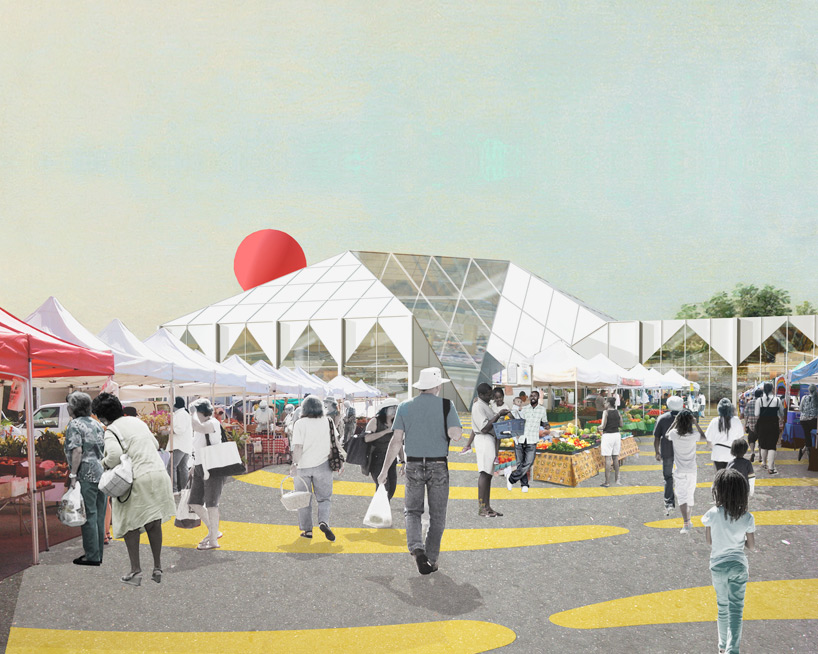
image © OMA
Located on a former tobacco plant at 30th St. between Market St. and Muhammad Ali Blvd., the project proposes a new model for the relationship between consumer and producer. The design integrates several key programs that serve and provide for all stages of the food chain, including a kitchen incubator, urban farm, recycling facility and programs that will engage directly with the public such as classrooms, demonstration farm, and local retail. Outdoor spaces include a market plaza, food truck plaza, and an edible garden. The building is organized to allow for systematic expansion in the future.
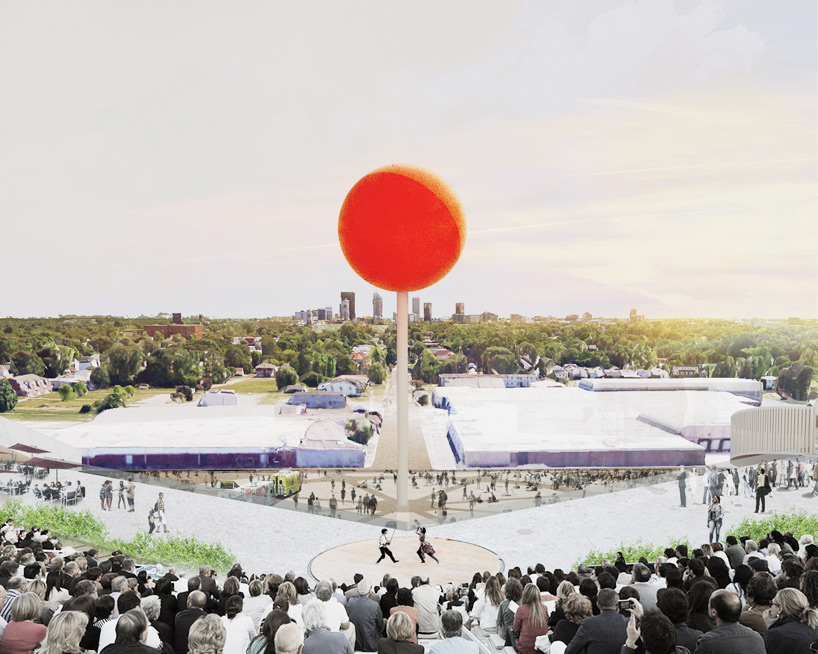
image © OMA
The West Louisville Food Port is projected to be a 50 million dollar investment, and create nearly 200 new jobs. Groundbreaking is expected for late summer of 2015, with businesses opening in phases.
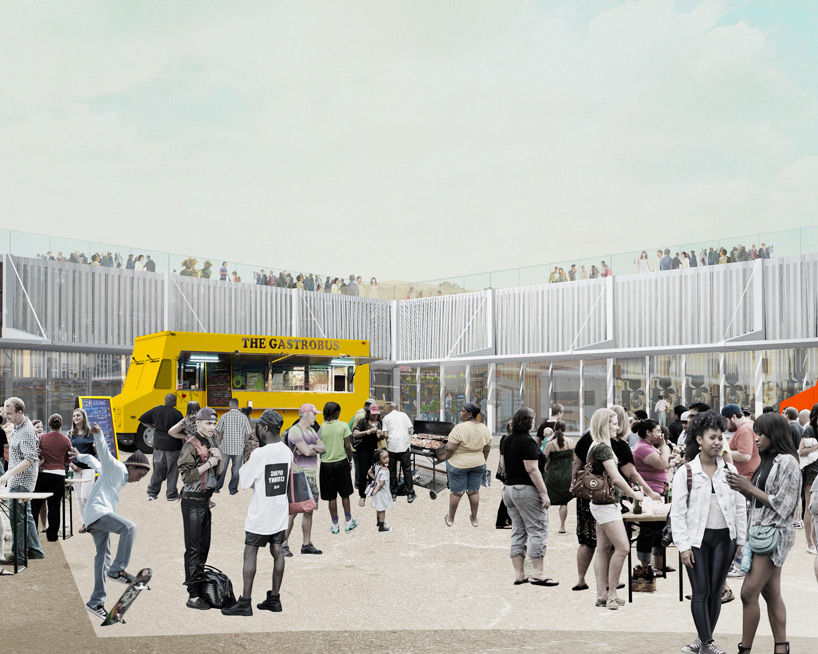
image © OMA
The enclosed program is organized by the shared needs and facilities of identified tenants. The Northeast corner of the site is anchored with retail, a coffee roastery and juicery production facilities. Aggregation and processing facilities are located at the center of the site, with a connection to Seed Capital's offices and the kitchen incubator. The Jefferson County Extension Office is lifted to create a strong connection between their demonstration farm below, and directly connected to the Urban Farm. The recycling facility is placed at the Southwest corner of the site for ease of access. Corresponding outdoor spaces aligned with surrounding thoroughfares include a market plaza, food truck plaza, and edible garden. The efficient building plan also allows for systematic growth to allow the building and its tenants to develop over time.

image © OMA
The Food Port provides a comprehensive survey of the food industry and its processes while relocating many food programs typically separated from the buyer back into the heart of the city. It defines a new model for how the relationship between consumer and producer can be defined and addresses uncaptured market demand and inefficiencies within the local food industry.

image © OMA
Logistically heavy programs such as the recycling facility and processing facilities are oriented towards the elevated railway on the West, while public programs such as retail and educational facilities face 30th Street. The intersections of programmatic bars take advantage of the unique combination of tenants to introduce shared facilities where private producers and public consumers meet.

image © OMA
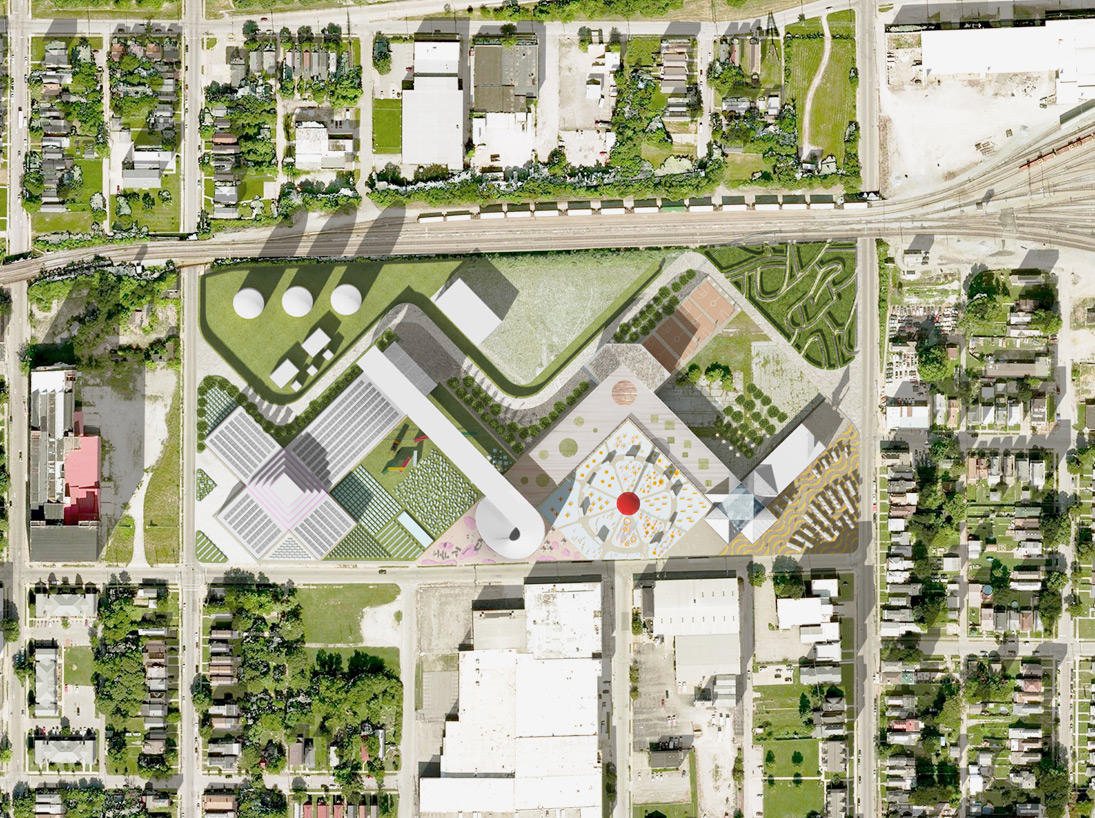
image © OMA
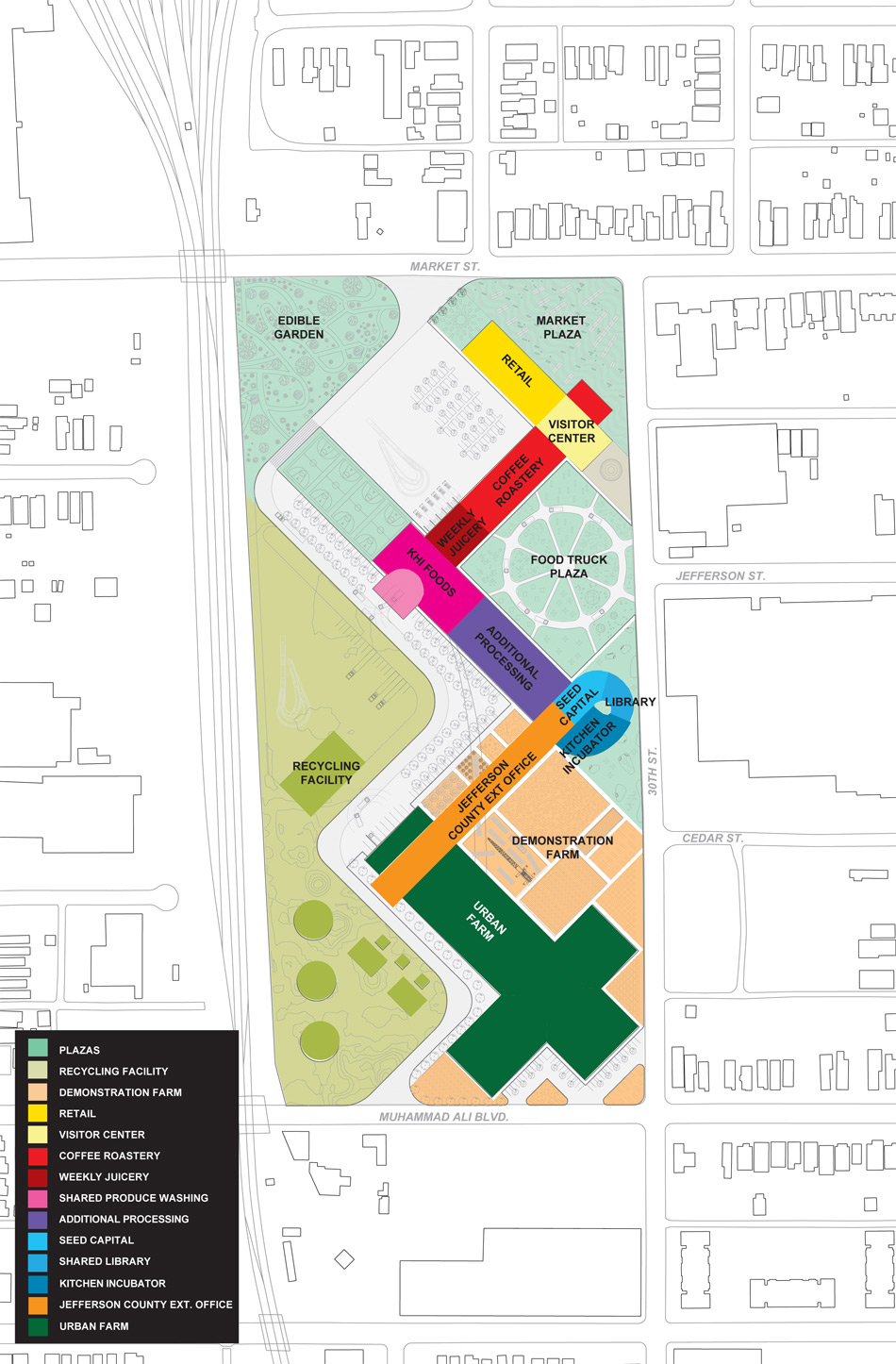
image © OMA
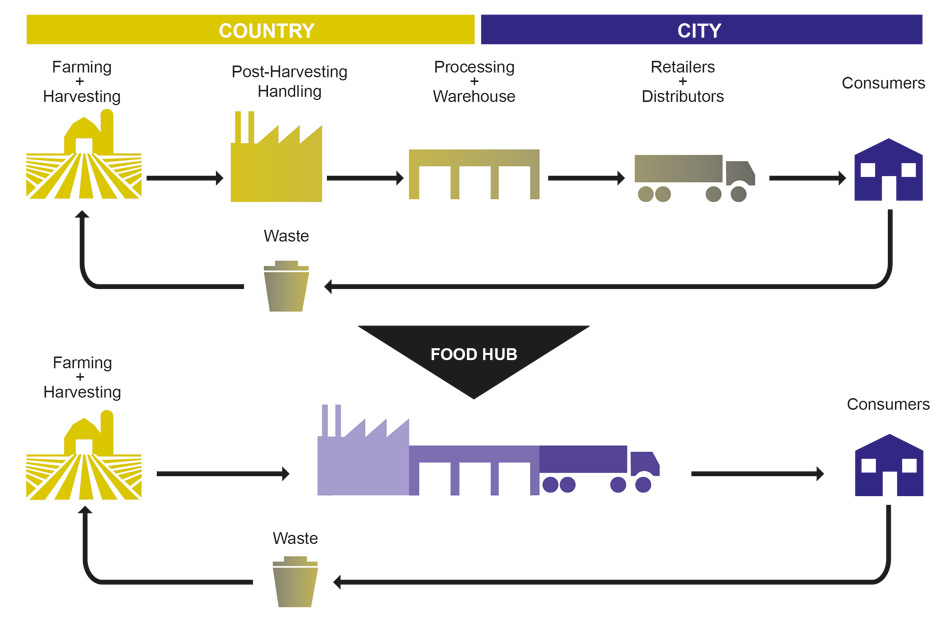
image © OMA
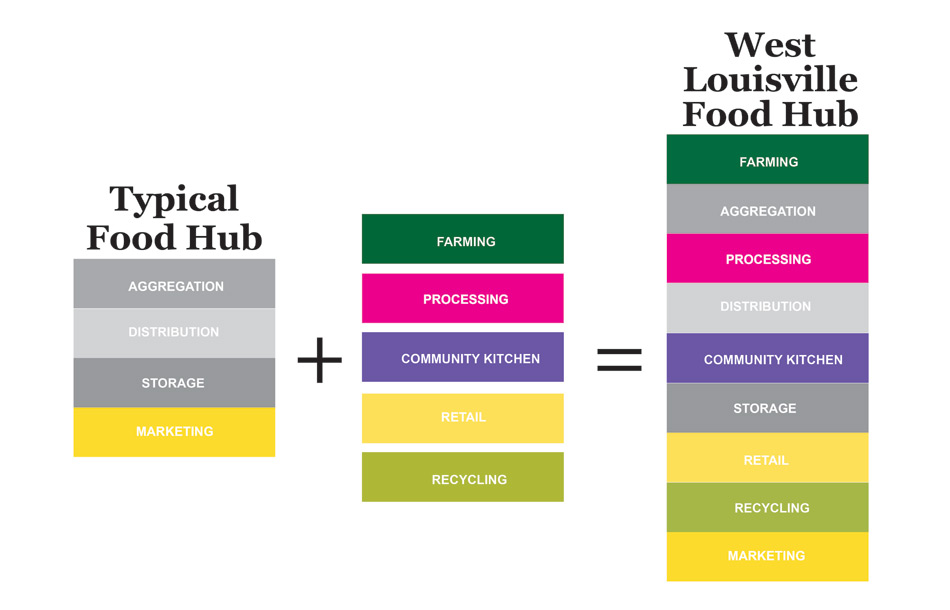
image © OMA
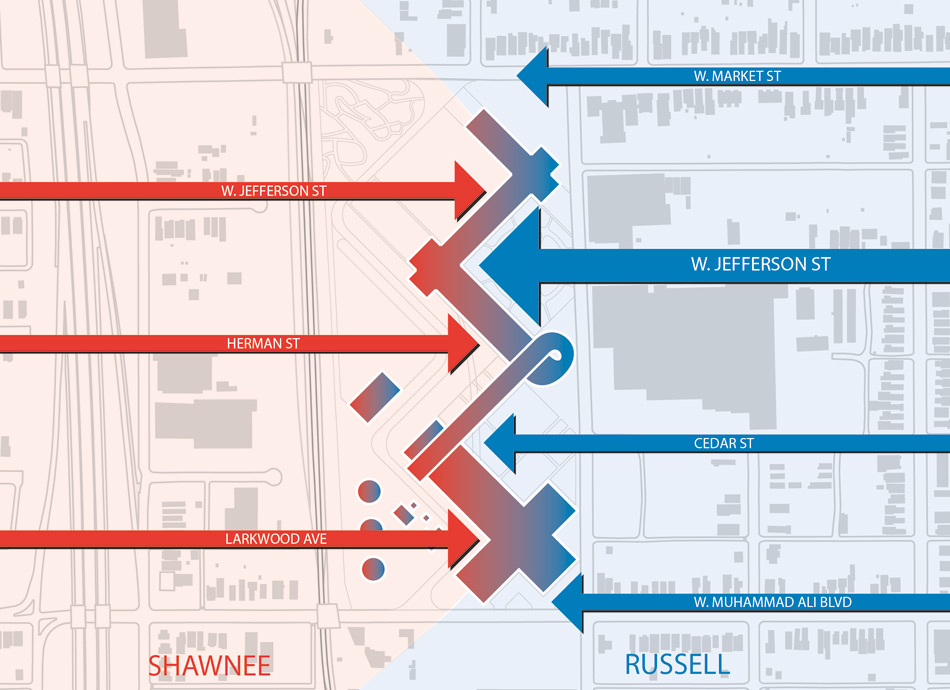
image © OMA
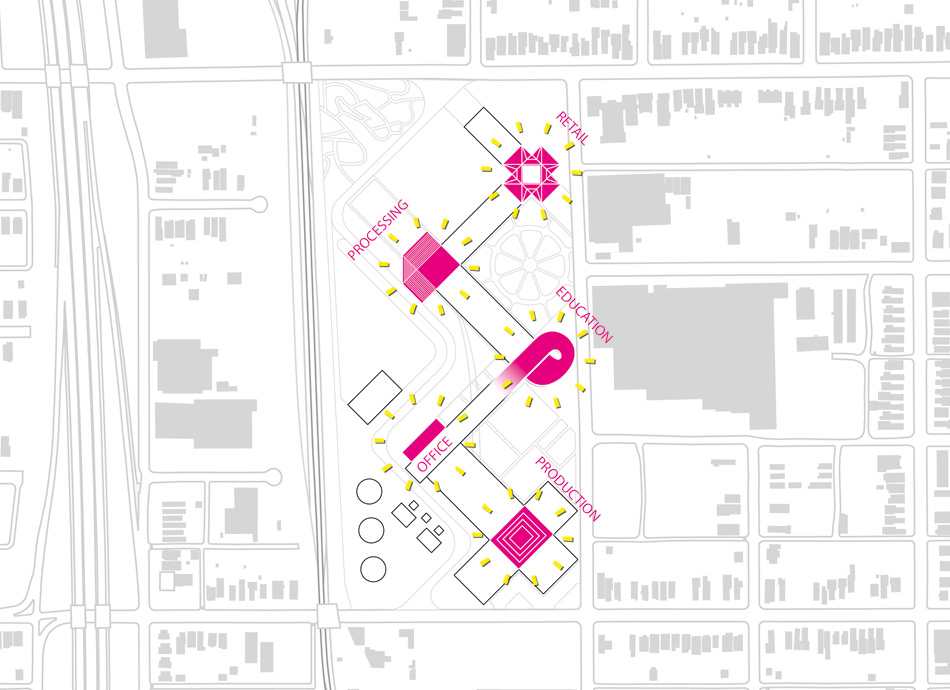
image © OMA
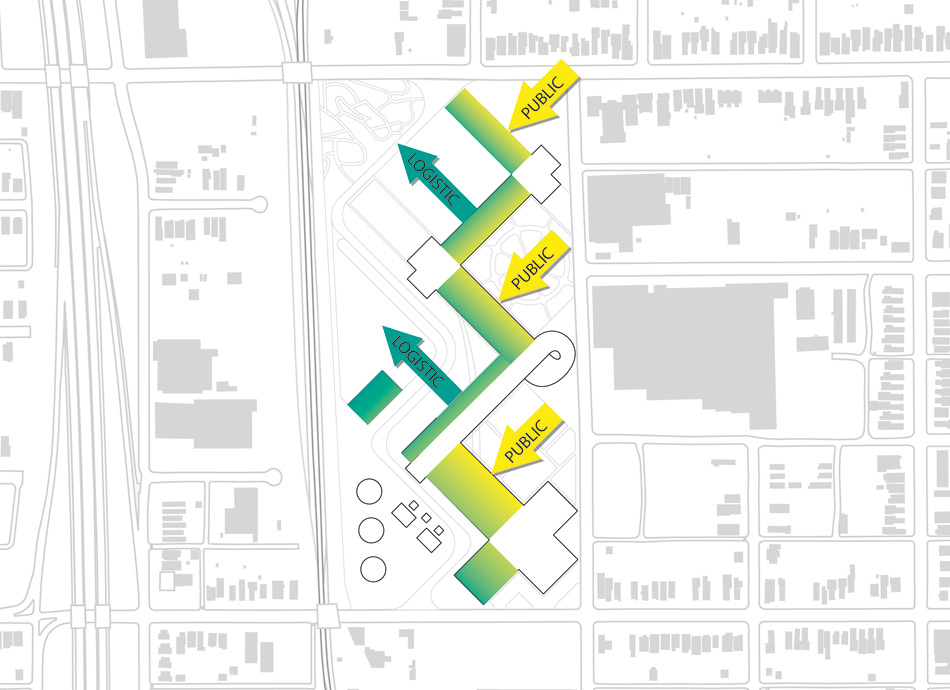
image © OMA
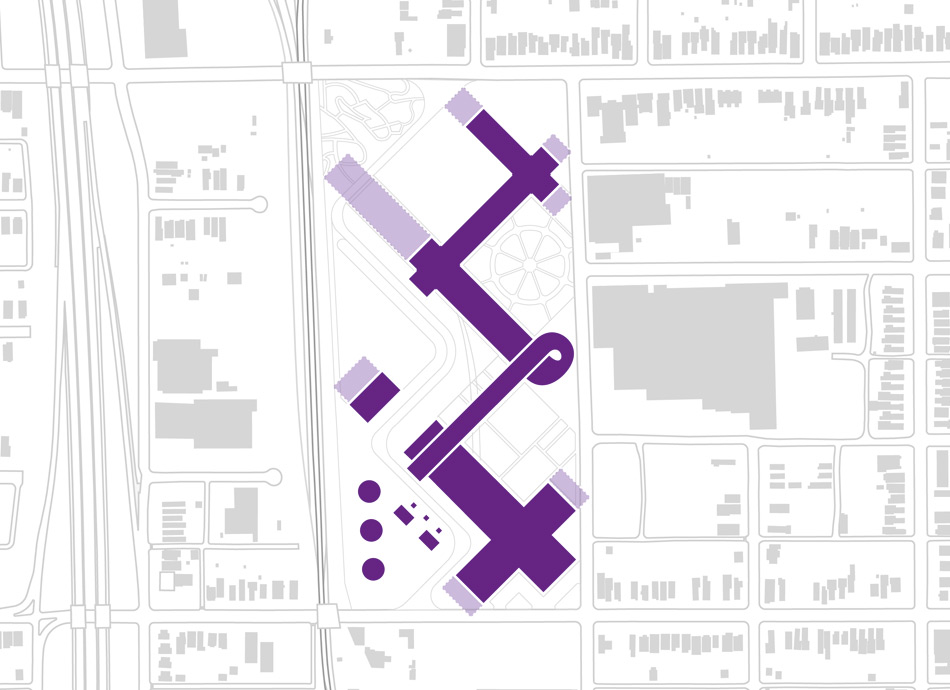
image © OMA
> via OMA
